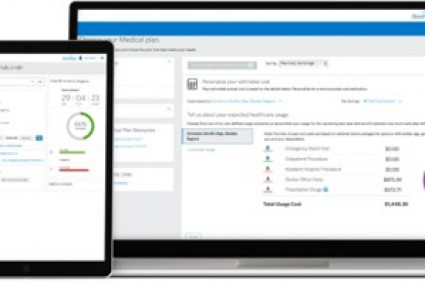
Effectively managing accounting is crucial for running a profitable merchandising enterprise. The key attention of a merchandiser is directed towards engaging in buying and selling actions that ultimately lead to profit generation. Efficiently handling your financial operations necessitates a thorough grasp of merchandising accounting principles and practices. This comprehensive guide endeavors to explore the essential factors of accounting for a merchandising business. These facets include inventory management, revenue recognition, cost of goods sold, and financial statements.
A detailed guide on retail accounting
For merchandising financial statements, accounting entails recording and analyzing financial transactions related to the buying and selling process. It empowers business owners to gauge their financial wellness, make knowledgeable determinations, and abide by legal and regulatory mandates. Inventory, revenue, expenses, and profitability can be accurately and timely assessed through effective accounting practices.
Read more: A Chart of Accounts for a Merchandising Business
Inventory Management and Valuation
In the accounting operations of a merchandising business, inventory management holds great significance. Accurately valuing inventory is necessary for calculating the cost of goods sold and presenting an authentic reflection of the value of remaining goods.
Inventory Systems
To effectively handle their inventory, merchandising businesses employ inventory systems. The perpetual inventory system and the periodic inventory system are both frequently adopted strategies.
Perpetual Inventory System
Under the perpetual inventory system, businesses continuously track inventory levels and costs in real-time. Every purchase and sale of merchandise is promptly documented, delivering current data regarding stock quantities and prices. To enable accurate and timely financial reporting, improve inventory management efficiency, and promptly identify any stock shortages or discrepancies, companies employ the perpetual inventory system.
Periodic Inventory System
The periodic inventory system entails conducting physical inventory counts at specified intervals, such as the completion of an accounting period. Rather than continuously updating inventory records, businesses determine the cost of goods sold and ending inventory through periodic calculations. Businesses must maintain separate records of purchases and manually alter the inventory records by conducting physical counts.
Revenue Recognition for Merchandising Sales
Properly recognizing revenue is of utmost importance for merchandising businesses in accurately reporting their sales revenue.
Sales Revenue Recognition
The recognition of sales revenue takes place when goods are delivered or services are rendered to customers, and the price is ascertainable. For a merchandising business, the following entry is made to record the sale:
Debit: The increase in receivables or cash can be recorded using either the Accounts Receivable or Cash account.
Credit: Sales Revenue (to record the revenue generated)
Sales Returns and Allowances
Sometimes, customers may return goods or receive allowances for damaged or unsatisfactory products. To account for these returns or allowances, the following entry is made:
Debit: Sales Returns and Allowances (to reduce sales revenue)
Credit: Accounts Receivable or Cash (to reduce receivables or issue a refund)
Debit: To augment the inventory for returned goods.
Sales Discounts
Customers are regularly offered sales discounts as a means of encouraging punctual payment or for alternative factors. The following entry is made to record the discount:
Debit: Accounts Receivable or Cash (to reduce receivables or receive payment)
Credit: Recording the discount given through sales discounts
Credit: Sales Revenue (to record the net sales revenue)
Financial Statements for Merchandising Business
Financial statements offer a complete overview of the financial performance and position of a merchandising business. For a merchandising business, the income statement and balance sheet play crucial roles as the two primary financial statements.
Income Statement
The income statement summarizes the revenue, expenses, and resulting net income or loss for a specific period. It includes the following components:
Net Sales Revenue: Total revenue is the money earned from selling things, minus returns, allowances, and discounts.
COGS: The expenses linked to manufacturing or purchasing the goods sold are called direct costs.
Gross Profit: Calculated by subtracting COGS from net sales revenue, it represents the profit generated from the core merchandising operations.
Operating Expenses: Includes all the money spent on running the business every day.
Operating Income: The overall profit is calculated by taking away the operating expenses from the gross profit.
Balance Sheet
The balance sheet is like a picture of a merchandising business's money situation at one particular moment. It includes the following components:
Assets: Resources owned by a business are things like money, stuff people owe the business, things the business has to sell, and stuff that doesn't get used up quickly.
Liabilities: When a business owes money or needs to repay loans, these are its obligations towards other people or companies. It also includes other financial responsibilities.
Equity: The owner's interest in the business, which consists of their capital and any earnings that haven't been distributed, is represented by this.
The balance sheet follows the fundamental accounting equation: Assets = Liabilities + Equity.
Conclusion
When running a business where products are sold, accounting plays a key role in various areas such as managing inventory effectively, recognizing revenue accurately, calculating costs related to goods sold precisely and preparing financial statements with accuracy. Using the right accounting principles and practices helps merchandising businesses make informed decisions, evaluate their financial performance effectively, and meet legal obligations. Long-term success depends on understanding the essential components and procedures of accounting for a business that deals with merchandise.
FAQs
What sets apart a merchandising business from a service business?
A merchandising business buys and sells tangible goods, while a service business provides intangible services.
Why is accurate inventory management crucial for a business that sells merchandise?
Accurate inventory management ensures that the business has the right amount of inventory on hand to meet customer demand, minimizes carrying costs, and helps prevent stock outs or overstocking.
Why is COGS significant for a company that sells merchandise?
COGS represents the direct costs incurred to produce or acquire the goods sold. This information tells us if a merchandising business can make a profit or not.
How does recognizing revenue affect a business that sells products?
Proper revenue recognition involves recording sales revenue when goods are delivered or services are rendered. This helps the business represent its true financial performance.




